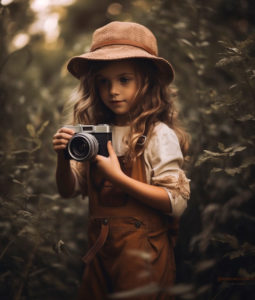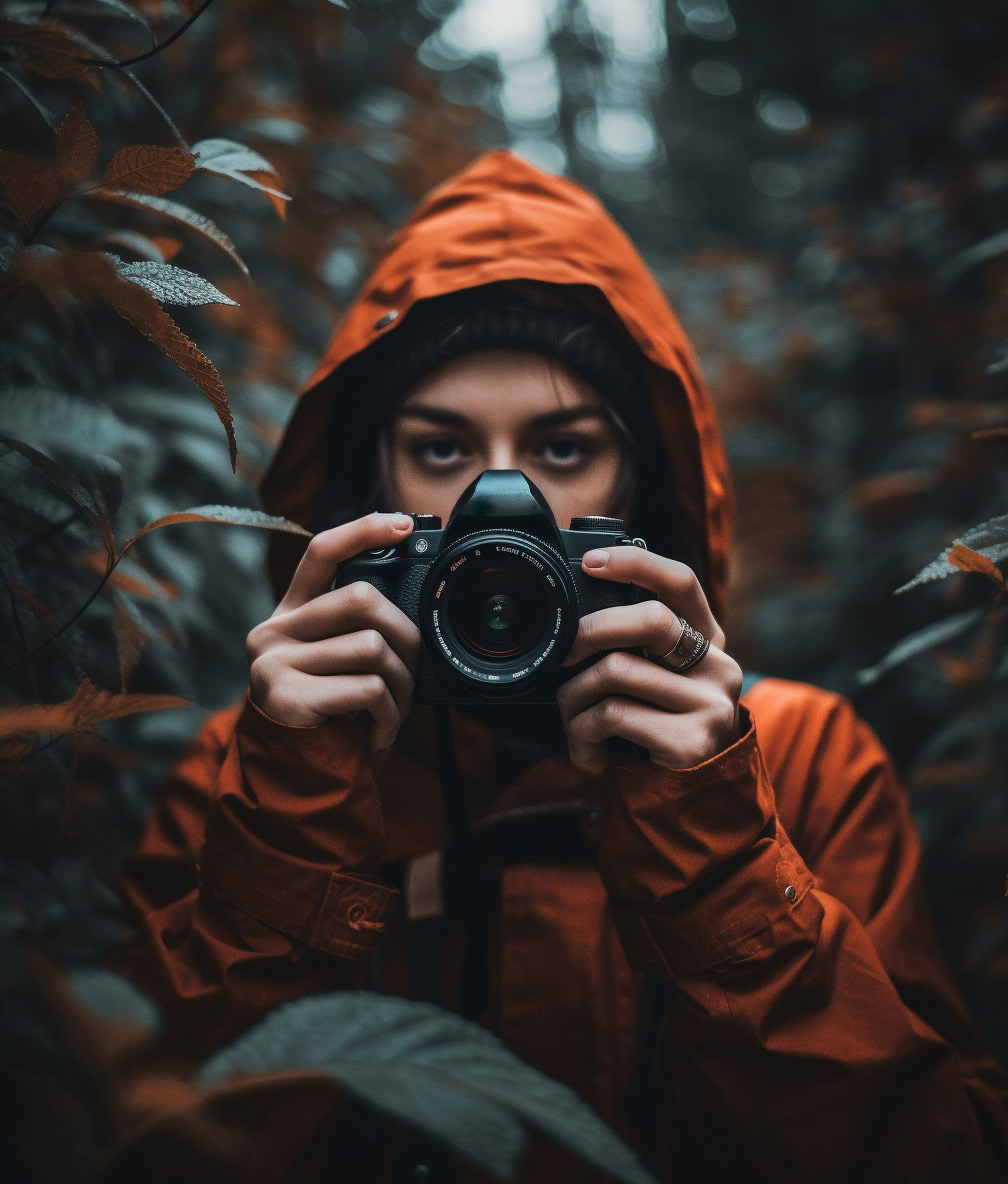
Photography is not just about taking pictures, it is an art that enables individuals to express themselves in a unique way. From capturing stunning landscapes to beautifully composed portraits, photography is a medium that allows people to unleash their creativity and showcase their perspective to the world. However, many people feel intimidated by the technicalities of cameras and photography, preventing them from exploring this artistic medium. In this article, we will explore the benefits of teaching photography basics simply and how it can unlock creativity.
Photography Basics For Kids
Teaching kids photography basics can be a fun activity that can unlock their creativity and provide them with a new perspective on the world. Photography can be a great way for kids to explore their surroundings and capture their experiences in a unique way. By teaching them camera basics, such as how to frame a shot, adjust focus, and control exposure, you can help them develop an eye for composition and a passion for photography that can last a lifetime.
Introducing Your Kids to Photography
Photography is a beautiful blend of art and technology, a fascinating discipline that can be especially appealing to children who are naturally curious and creative. Start by introducing your child to the concept of photography. Explain what it is and how cameras work in simple terms that they can understand. You can use a toy camera or a simple point-and-shoot camera to get them accustomed to the idea of taking pictures. At this early stage, the goal is not to have them take perfect photos but to familiarize them with the process and foster an interest in photography.
 Next, talk about the various types of photography – portrait, landscape, wildlife, sports, etc. Show them examples of each type and explain what makes each one unique. This can be a fun activity that you can do together, and it can help your child start to think about what kind of photos they might want to take. Encourage them to experiment and try out different types of photography. Remember, the goal at this stage is to nurture their curiosity and creativity, not to focus on technical proficiency.
Next, talk about the various types of photography – portrait, landscape, wildlife, sports, etc. Show them examples of each type and explain what makes each one unique. This can be a fun activity that you can do together, and it can help your child start to think about what kind of photos they might want to take. Encourage them to experiment and try out different types of photography. Remember, the goal at this stage is to nurture their curiosity and creativity, not to focus on technical proficiency.
Once your child has a basic understanding of what photography is and the different types of photos they can take, it’s time to introduce them to the basics of using a camera. Start with the most fundamental aspects, such as how to hold the camera correctly, how to focus, and how to take a picture. Teach them about the shutter button and how to press it without shaking the camera. Let them practice these skills until they feel comfortable with them. Remember to keep the instructions simple and straightforward, and most importantly, make the learning process fun.
Mastering Basic Photography Skills
Once your child has learned the basics of how to use a camera, it’s time to delve deeper into the craft of photography. Begin with the concept of framing and composition. Teach them about the rule of thirds, a basic principle in photography where the image is divided into nine equal parts. Explain how placing points of interest along these lines or at their intersections can make a photo more balanced and pleasing to the eye. Allow them to practice this concept by taking photos and discussing how they could improve their composition.
Lighting is another crucial aspect of photography that you should introduce to your child. Teach them how the amount and quality of light can significantly impact a photo. Show them how to use natural light to their advantage and how to adjust their camera settings in different lighting conditions. Understanding the importance of lighting in photography will not only improve their photos but also help them appreciate the beauty of the world around them.
Finally, encourage your child to develop their own unique style. Remind them that photography, like any other art form, is a form of self-expression. Encourage them to explore different themes, perspectives, and techniques. Give them constructive feedback on their work, but let them know that it’s okay to break the rules sometimes. After all, the beauty of photography lies in its ability to capture the world from different perspectives. And who knows, by nurturing their passion for photography, you may be fostering a lifelong hobby or even a future career.
Capture the World
Photography allows individuals to capture moments in time and express their artistic vision. By learning camera basics, individuals can take control of their photography and get the results they desire. Photography can be a great way to explore the world and unleash creativity. From finding unique perspectives to experimenting with lighting, photography offers endless possibilities for artistic expression.
Discover Your Unique Perspective
 Photography is a magical medium that empowers us to freeze moments in time and share our unique perspectives with the world. It’s an art form that allows us to express our creativity and make a statement, no matter how small or grand. By learning the basics of photography, you can start to take control of your camera, and in turn, take control of the images you produce. This opens up a world of possibilities for you to explore and share with others.
Photography is a magical medium that empowers us to freeze moments in time and share our unique perspectives with the world. It’s an art form that allows us to express our creativity and make a statement, no matter how small or grand. By learning the basics of photography, you can start to take control of your camera, and in turn, take control of the images you produce. This opens up a world of possibilities for you to explore and share with others.
As you begin to master the fundamentals, you’ll find that photography is much more than just pressing a button. It’s a way of seeing the world through a different lens – literally and figuratively. The more you practice, the more you’ll notice the beauty in the mundane, the magic in the ordinary, and the stories waiting to be told. It’s an ongoing journey of self-discovery as you develop your own personal style and unique voice, constantly pushing yourself to see and capture the world in new and exciting ways.
One of the most rewarding aspects of photography is the freedom to experiment with your surroundings. By playing with composition, lighting, and various techniques, you can create striking images that tell a story or evoke emotion. Don’t be afraid to try new things – push the boundaries of what you think is possible and allow yourself to make mistakes. Often, it’s through these experiments and “happy accidents” that you’ll discover your own artistic vision and unlock your creative potential. Remember, the world is your canvas, and your camera is the brush – so go forth and create your masterpiece.
Photography Basics Made Simple
Photography can seem intimidating, but it doesn’t have to be. By breaking down camera basics into simple steps, anyone can learn how to take great photos. Start with the basics of composition and framing, then move on to adjusting focus and exposure. With a few simple tips and tricks, anyone can take stunning photos.
Unlock Your Inner Photographer
 Have you ever looked at a beautiful photograph and wondered if you could ever take such a stunning shot? Good news! You absolutely can. The secret lies in understanding a few basic principles and practicing with intention. Photography may seem complex at first, but by breaking it down into manageable steps, even the most inexperienced shutterbug can learn to take captivating photos. Let’s discuss composition and framing, focus, and exposure to help you develop your eye for great photography.
Have you ever looked at a beautiful photograph and wondered if you could ever take such a stunning shot? Good news! You absolutely can. The secret lies in understanding a few basic principles and practicing with intention. Photography may seem complex at first, but by breaking it down into manageable steps, even the most inexperienced shutterbug can learn to take captivating photos. Let’s discuss composition and framing, focus, and exposure to help you develop your eye for great photography.
The first step towards taking eye-catching photos is mastering composition and framing. Composition refers to the arrangement of elements in a photograph, while framing is the way those elements are contained within the image. One of the most effective techniques for improving your composition is the rule of thirds. Imagine dividing your frame into a grid of nine equal parts (three horizontal lines and three vertical lines). By placing your subject along these lines or at their intersections, you’ll create a more dynamic and visually appealing image. Remember that it’s important to experiment with different angles and perspectives to find the perfect shot. With practice, you’ll quickly develop your own unique style and learn how to create well-balanced compositions that captivate your audience.
Now that you have a grasp on composition and framing, it’s time to tackle focus. A well-focused photograph has a sharp subject, drawing the viewer’s attention to the most important part of the image. Modern cameras often have autofocus systems that do a decent job, but learning how to manually adjust focus gives you greater control and flexibility. To ensure a sharp focus, use the camera’s focus points and lock the focus on your subject before recomposing your shot. If you’re shooting in low light or with a wide aperture, using a tripod can help stabilize your camera and prevent motion blur. Remember that practice makes perfect, so don’t be discouraged if it takes some time to get the hang of focusing manually.
 Finally, let’s talk about exposure. Exposure refers to the amount of light that reaches your camera’s sensor, and it’s crucial for capturing well-lit photos. There are three main factors that affect exposure: aperture, shutter speed, and ISO. Aperture controls the amount of light that enters the camera, shutter speed determines how long the camera’s sensor is exposed to light, and ISO affects the sensor’s sensitivity to light. Adjusting these settings allows you to control the brightness and mood of your photos, as well as freeze motion or create artistic blur effects. Start by experimenting with different settings in manual mode, and over time, you’ll become more comfortable with manipulating these variables to achieve your desired outcome.
Finally, let’s talk about exposure. Exposure refers to the amount of light that reaches your camera’s sensor, and it’s crucial for capturing well-lit photos. There are three main factors that affect exposure: aperture, shutter speed, and ISO. Aperture controls the amount of light that enters the camera, shutter speed determines how long the camera’s sensor is exposed to light, and ISO affects the sensor’s sensitivity to light. Adjusting these settings allows you to control the brightness and mood of your photos, as well as freeze motion or create artistic blur effects. Start by experimenting with different settings in manual mode, and over time, you’ll become more comfortable with manipulating these variables to achieve your desired outcome.
Photography is a rewarding and accessible art form that can be enjoyed by everyone. By focusing on composition and framing, mastering focus, and understanding exposure, you’ll be well on your way to taking stunning photos that you’ll be proud to share. Embrace the learning process, practice regularly, and most importantly, have fun exploring the world through your camera lens.
Unlock Your Potential
Photography can unlock a creative potential that many people never knew they had. By learning camera basics, individuals can take control of their photography and express themselves in a unique way. Photography can help individuals explore the world around them and communicate their perspectives to others. Whether you are a beginner or an experienced photographer, learning photography basics can help you unlock your full creative potential.
Photography is a powerful medium that can unlock creativity and provide individuals with a new perspective on the world. By teaching photography basics simply, we can help individuals of all ages and backgrounds explore this artistic medium and express themselves in a unique way. Whether you are capturing the beauty of nature or the emotions of a portrait, photography offers endless possibilities for artistic expression. So, grab your camera and start exploring the world through your lens today!





No Comments